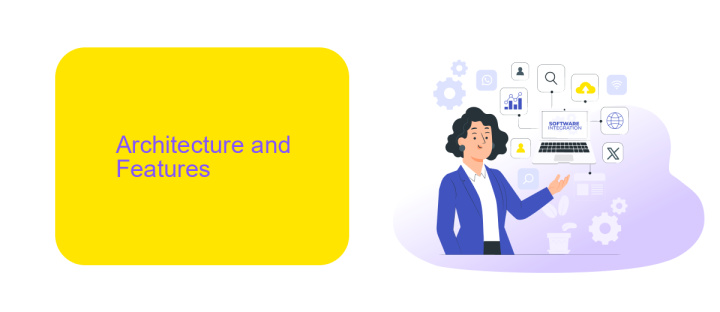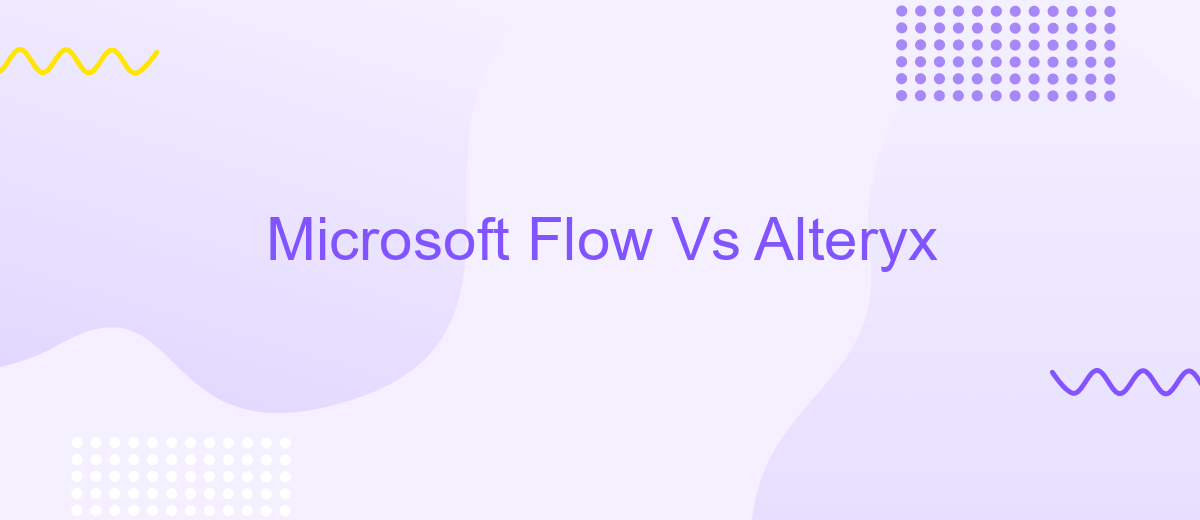Microsoft Flow Vs Alteryx
In the rapidly evolving landscape of data automation and workflow management, Microsoft Flow (now known as Power Automate) and Alteryx stand out as powerful tools. This article aims to compare these two platforms, examining their features, strengths, and ideal use cases to help businesses and professionals make informed decisions about which solution best fits their needs.
Introduction
In today's fast-paced business environment, automation tools have become essential for streamlining workflows and enhancing productivity. Microsoft Flow and Alteryx are two prominent platforms that offer robust solutions for automating tasks and integrating various applications. Both tools cater to different user needs and have unique features that make them suitable for specific scenarios.
- Microsoft Flow, now known as Power Automate, focuses on automating repetitive tasks and connecting different software services.
- Alteryx, on the other hand, is designed for data analysts and offers advanced data preparation, blending, and analytics capabilities.
- ApiX-Drive can also be a valuable addition, as it provides seamless integration between numerous apps and services, complementing the functionalities of both Microsoft Flow and Alteryx.
Choosing the right tool depends on your specific requirements, whether you are looking for simple task automation or advanced data analytics. This article will compare Microsoft Flow and Alteryx, highlighting their key features, advantages, and use cases to help you make an informed decision.
Architecture and Features

Microsoft Flow, now known as Power Automate, is a cloud-based service that allows users to create automated workflows between various applications and services. Its architecture is built on connectors, triggers, and actions, enabling seamless integration with a wide range of Microsoft and third-party applications. Users can design workflows using a visual designer, making it accessible even for those without coding skills. Power Automate supports a vast array of templates and pre-built workflows, simplifying the process of automation for common tasks.
Alteryx, on the other hand, is a powerful data analytics platform designed for data blending, preparation, and advanced analytics. Its architecture revolves around a drag-and-drop interface that allows users to build complex data workflows with ease. Alteryx integrates with numerous data sources and offers a rich set of tools for data manipulation, statistical analysis, and predictive modeling. For users looking to enhance their integration capabilities, services like ApiX-Drive can be employed to connect Alteryx with various external applications, ensuring a more streamlined and automated data processing experience.
Use Cases and Applications

Microsoft Flow and Alteryx cater to different business needs, making each suitable for unique applications. Microsoft Flow is primarily used for automating workflows and integrating various services and applications. It is designed to streamline repetitive tasks, enhance productivity, and ensure seamless data flow across different platforms.
1. Automating routine tasks such as email notifications, file backups, and data synchronization.
2. Integrating with services like ApiX-Drive to facilitate seamless data transfer between CRM, ERP, and other business applications.
3. Enhancing team collaboration by automating approval processes and task assignments.
Alteryx, on the other hand, is a powerful data analytics tool that enables users to prepare, blend, and analyze data from multiple sources. It is ideal for complex data workflows, predictive analytics, and generating insights from large datasets. Businesses leverage Alteryx for data-driven decision-making, advanced analytics, and reporting. Both tools offer robust solutions, but their use cases vary significantly based on the specific needs of the organization.
Pricing and Licensing

When it comes to pricing and licensing, both Microsoft Flow and Alteryx offer different models tailored to various user needs. Microsoft Flow, now known as Power Automate, provides a subscription-based pricing model with multiple tiers, including a free plan with limited features.
On the other hand, Alteryx operates on a more traditional licensing model, which can be more costly upfront but provides extensive data analytics capabilities. Alteryx also offers different pricing tiers based on the complexity and scale of the operations required.
- Microsoft Flow (Power Automate) Free Plan: Limited features, suitable for small tasks.
- Power Automate Per User Plan: per user/month.
- Power Automate Per Flow Plan: 0 per flow/month.
- Alteryx Designer: Starts at ,195 per year.
- Alteryx Server: Custom pricing based on deployment needs.
For those looking to streamline their integration processes, services like ApiX-Drive can be beneficial. ApiX-Drive offers tools to easily connect various applications and automate workflows, making it a valuable addition to either Microsoft Flow or Alteryx setups.
Conclusion
In conclusion, both Microsoft Flow and Alteryx offer robust solutions for automating workflows and data integration. Microsoft Flow excels in its seamless integration with other Microsoft products and its user-friendly interface, making it ideal for businesses already embedded in the Microsoft ecosystem. On the other hand, Alteryx stands out with its advanced data analytics capabilities and powerful data transformation tools, which are crucial for organizations that require in-depth data analysis and complex data workflows.
When choosing between the two, it is essential to consider the specific needs of your organization. For those looking for a simpler, more integrated solution within the Microsoft suite, Microsoft Flow is the way to go. However, if your focus is on comprehensive data analytics and you need a more versatile tool, Alteryx is the better choice. Additionally, services like ApiX-Drive can further streamline the integration process, allowing for more efficient and effective automation across various platforms and tools.


FAQ
What are the main differences between Microsoft Flow and Alteryx?
Can Microsoft Flow and Alteryx be integrated with other third-party applications?
Which tool is more user-friendly for non-technical users?
How do these tools handle data security and compliance?
Are there any alternatives for automating workflows and integrating applications?
Strive to take your business to the next level, achieve your goals faster and more efficiently? Apix-Drive is your reliable assistant for these tasks. An online service and application connector will help you automate key business processes and get rid of the routine. You and your employees will free up time for important core tasks. Try Apix-Drive features for free to see the effectiveness of the online connector for yourself.

